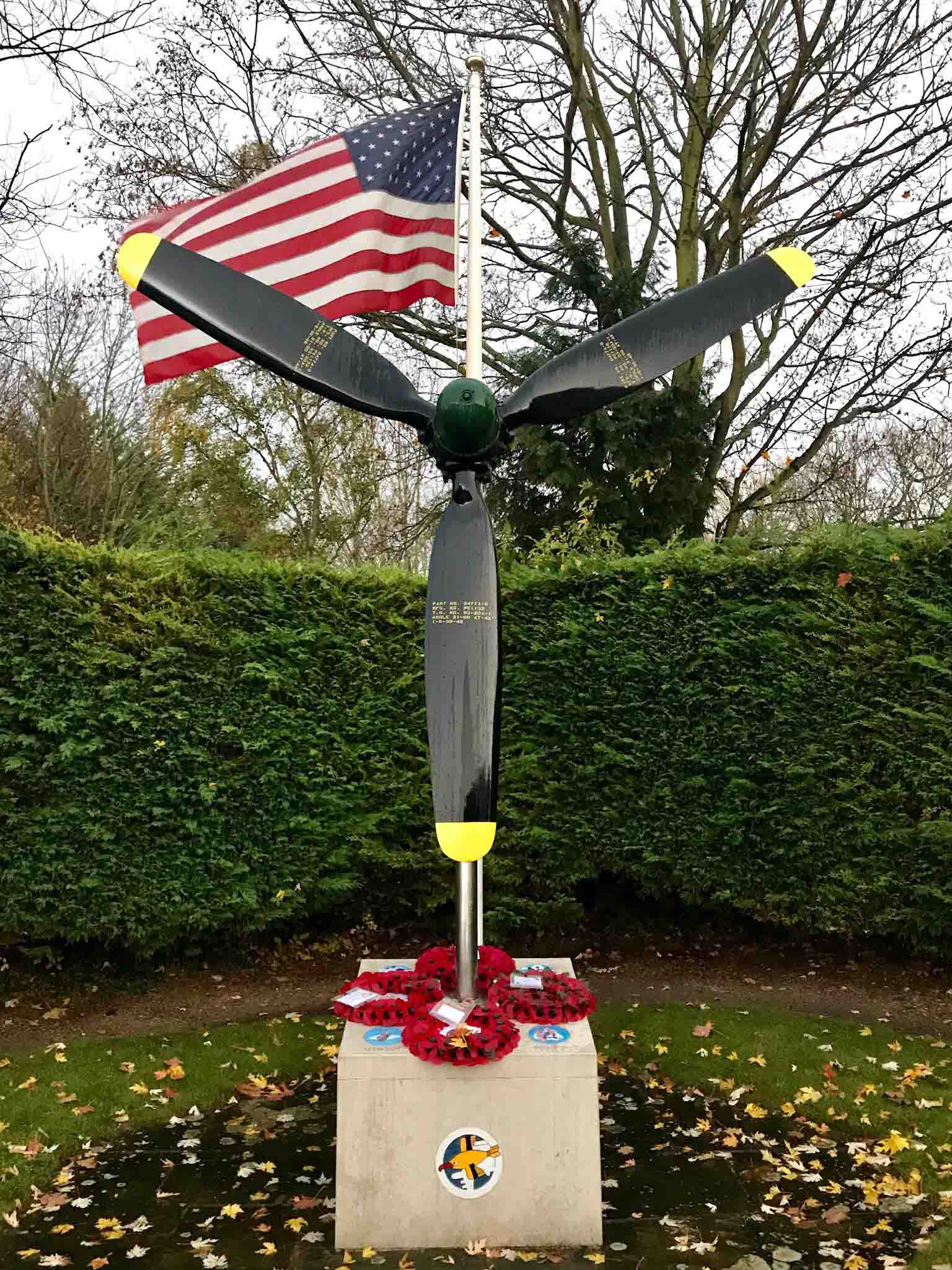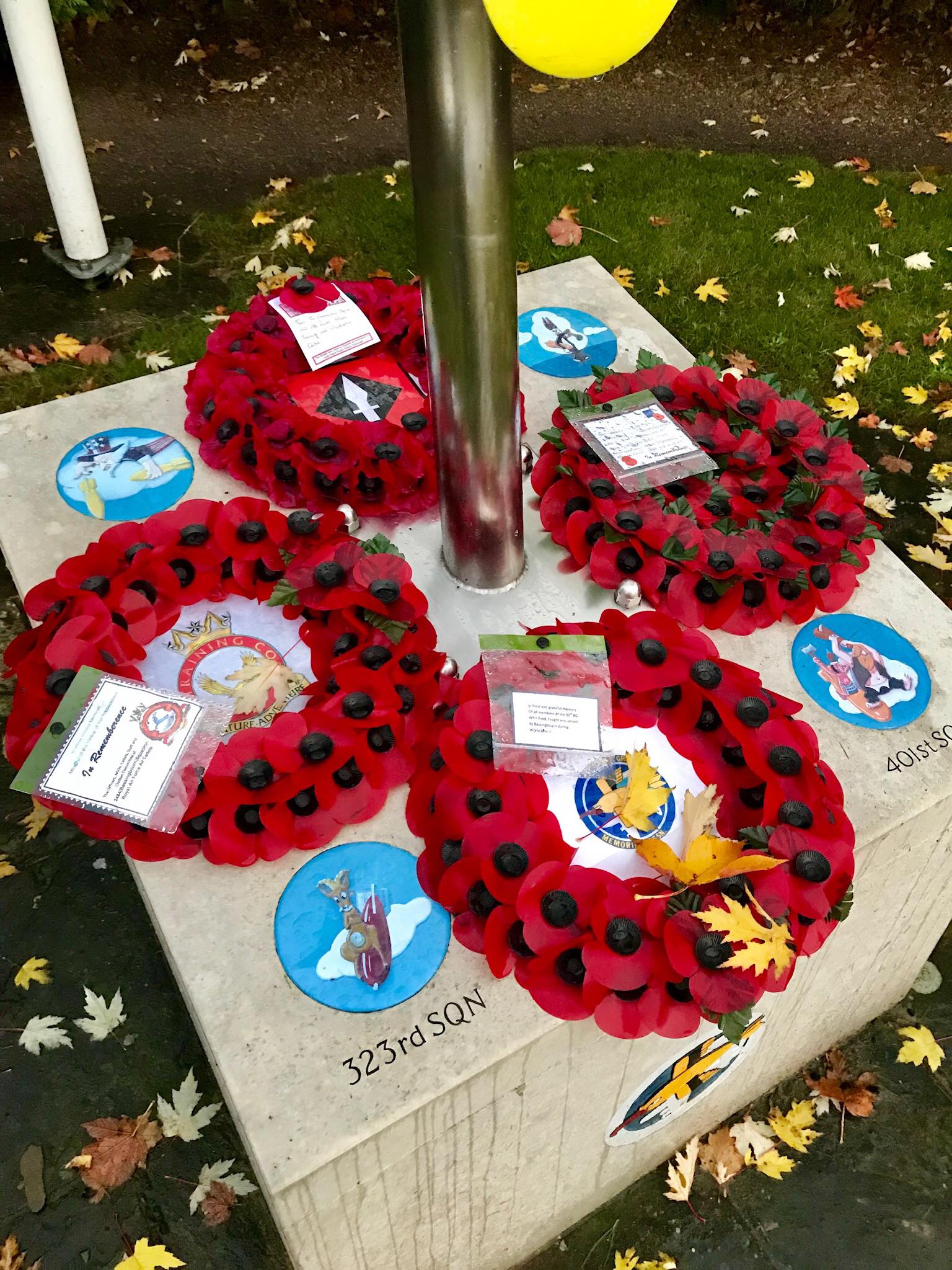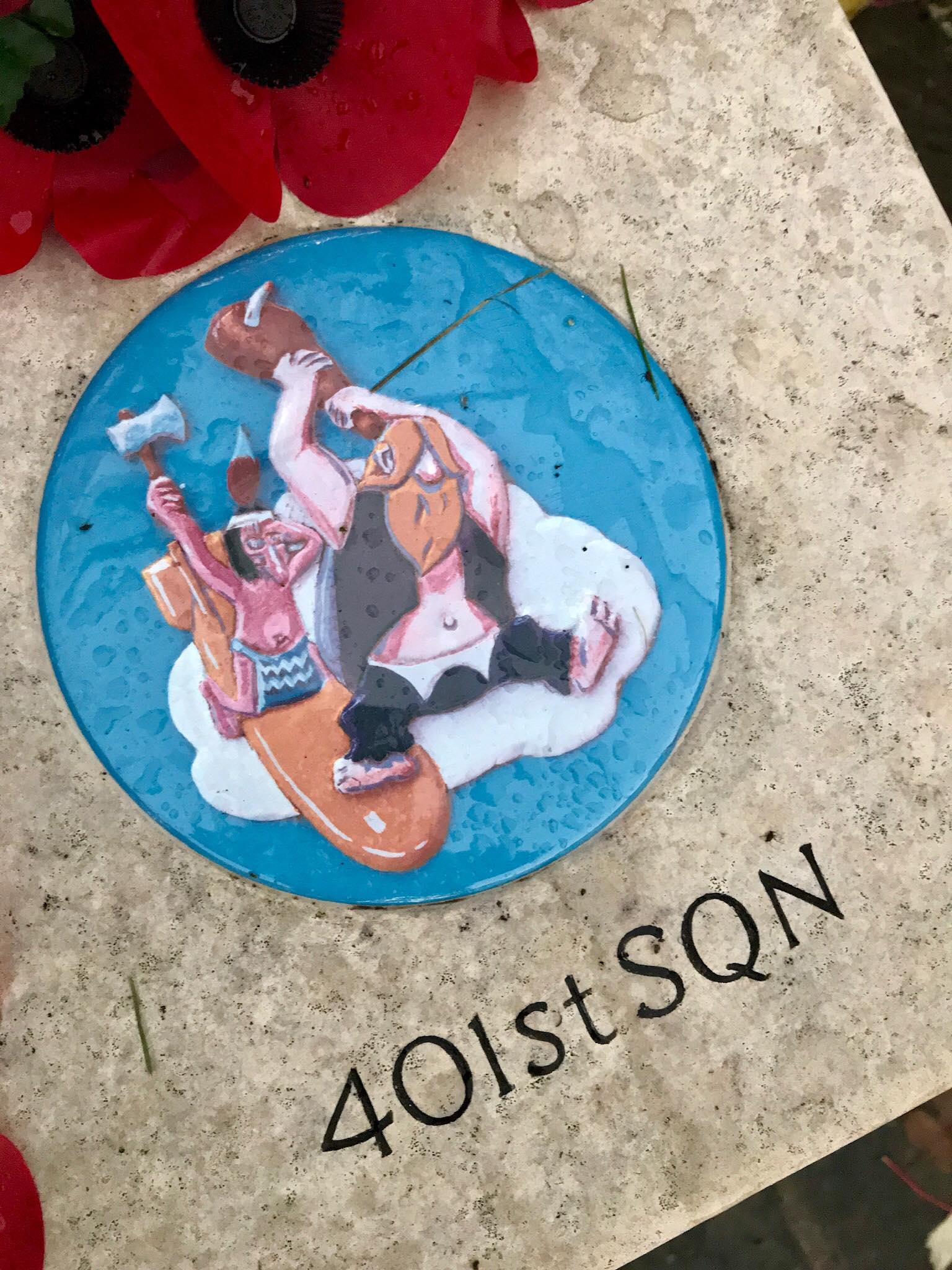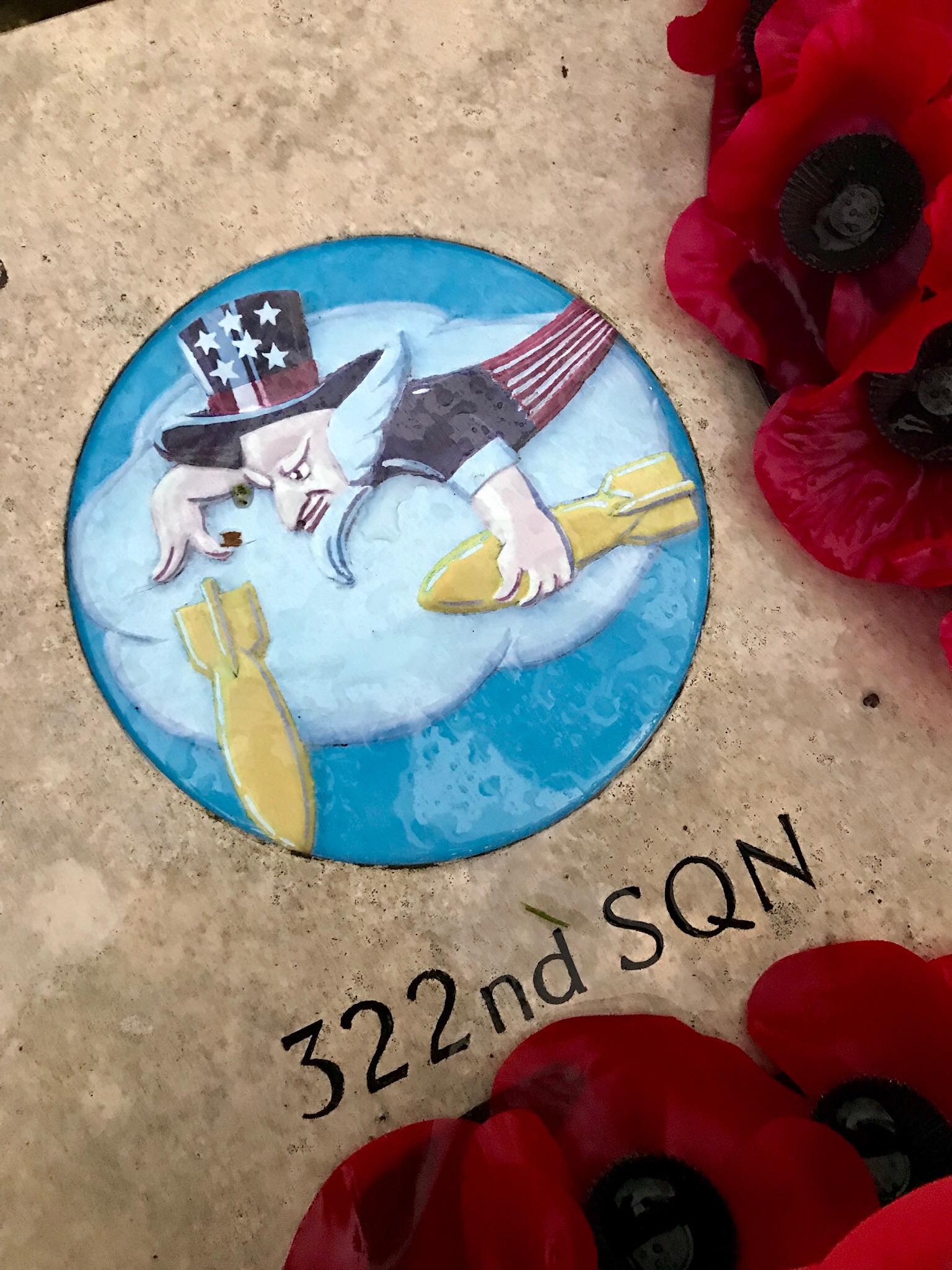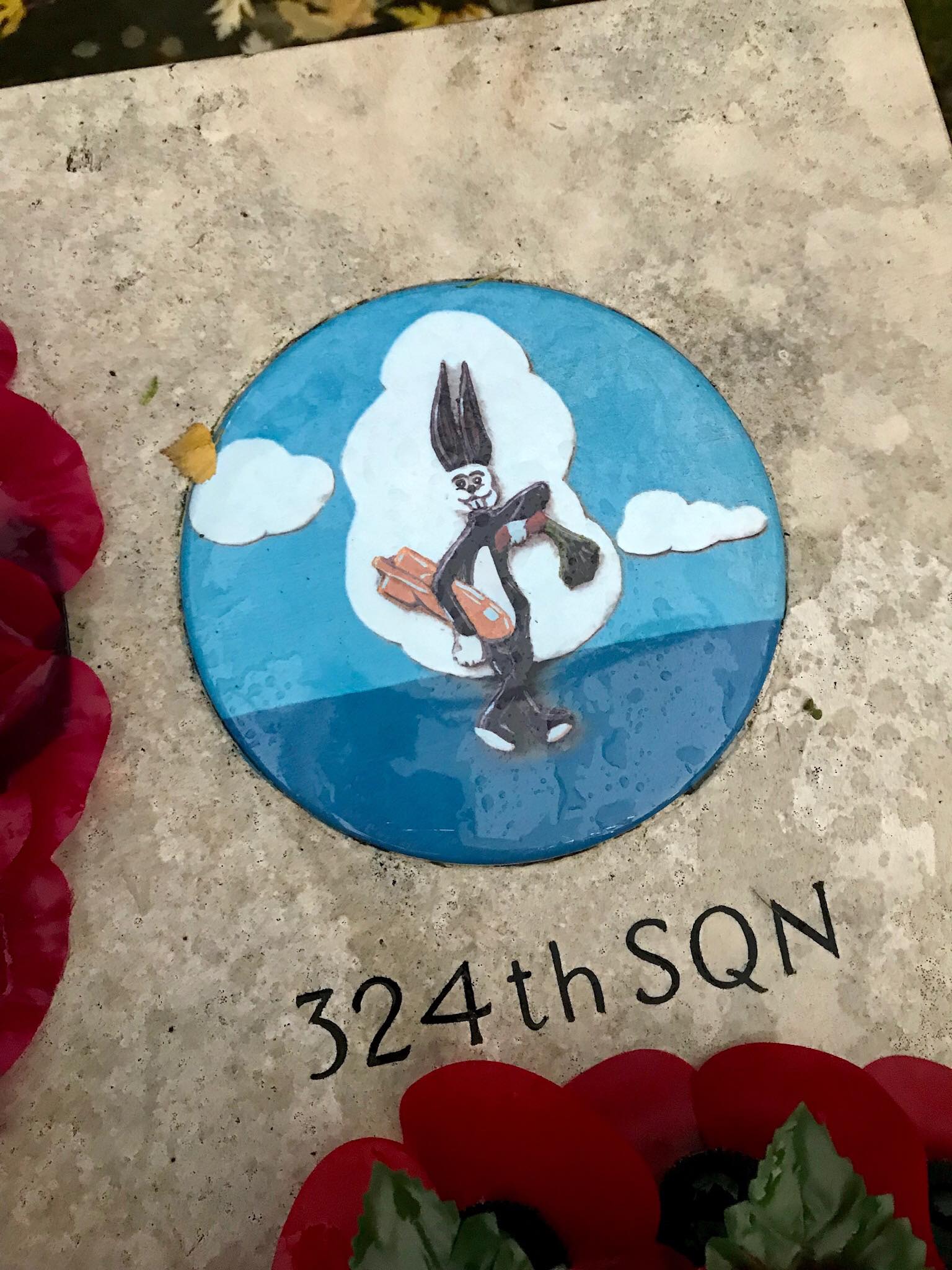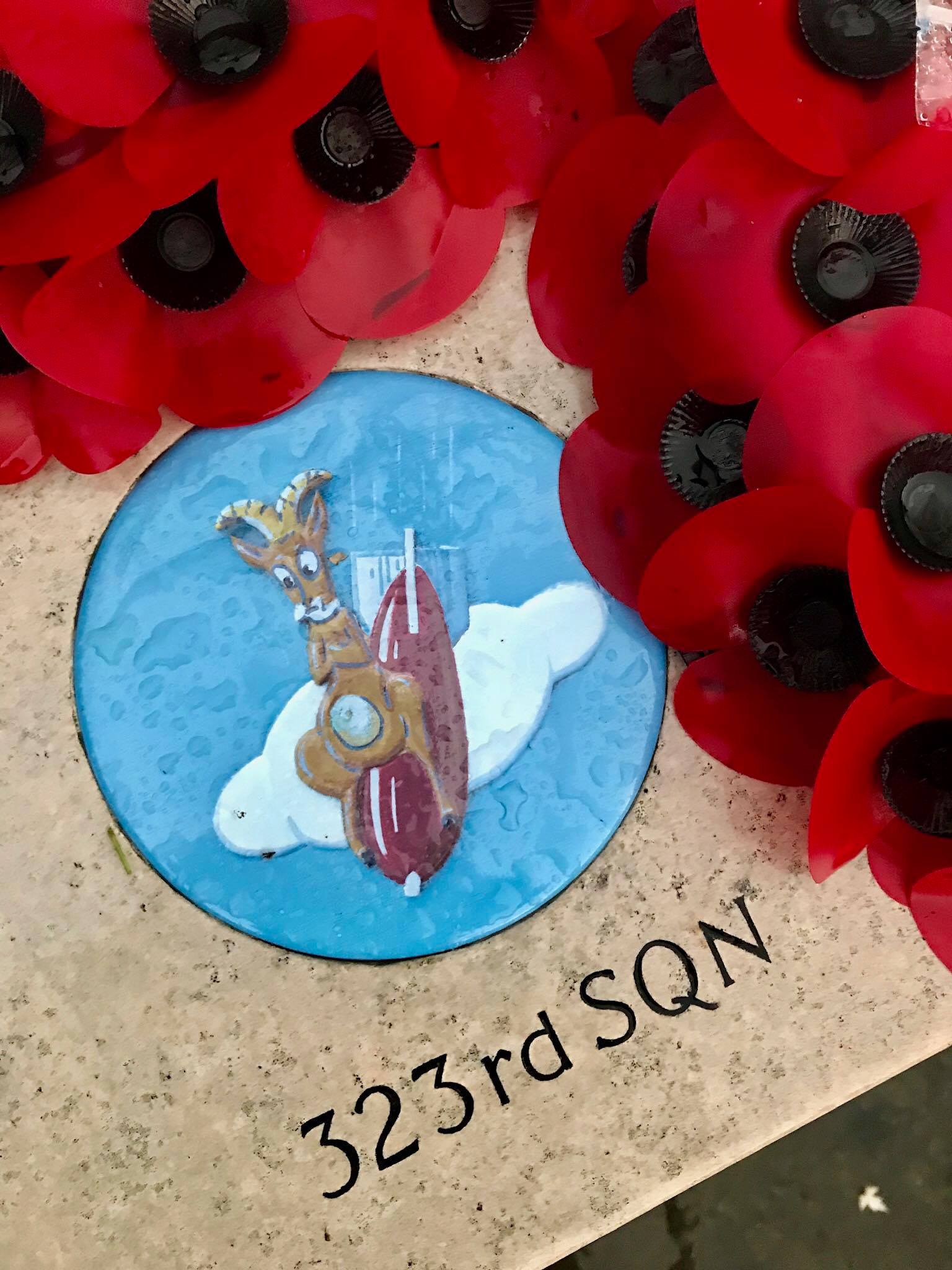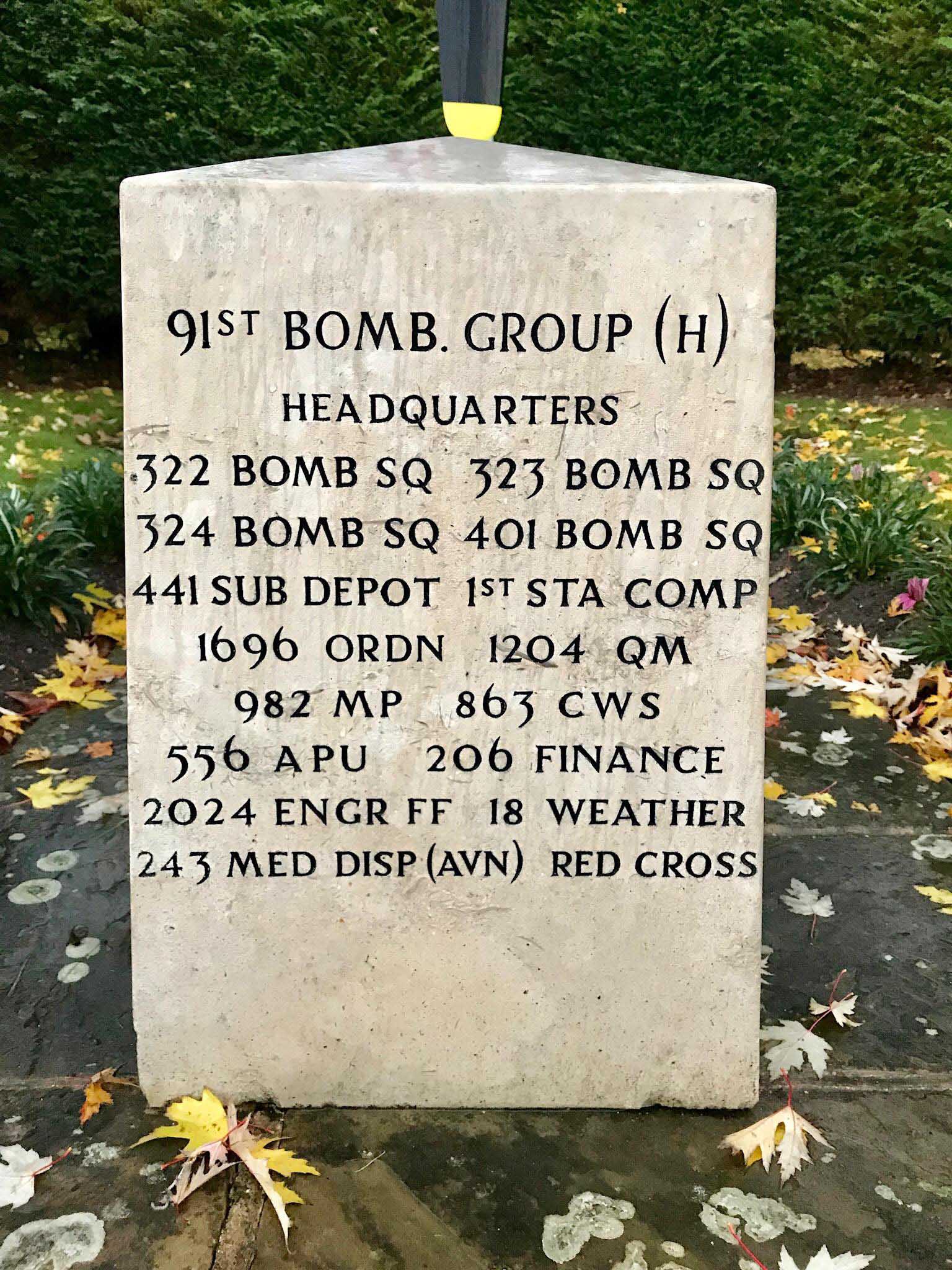91st Bomber Group Prop
Details:
To the south next to the entrance gate. The memorial is set in a small area surrounded by semi-circular hedges.
A black B-17 propeller supported by a metal pole and is mounted to a stone base. On the top surface of the stone base are carved and painted emblems of the 321st, 322nd, 323rd, and 401st Bomb Squadrons while on the front side is the 91st Bomb Group insignia. It took nearly 10 years to find a suitable B-17 propeller. In 1976, a propeller was found on a wrecked B-17 in Sudan and was refurbished and made the propeller the centerpiece of the memorial. The angle of the propeller on the memorial is the same height and angle as it would be on a B-17. The pole holding the propeller is a stainless steel tube inserted into a massive concrete block and into the ground. Inside the stainless steel sleeve, is a solid piece of steel to enable the weight and angle to be supported for the propeller. In front of the monument is an upright triangular prism stone which is inscribed with the Group’s supported units and the commemoration message. The memorials commemorate the 91st Bomber Group which served at RAF Bassingbourn during World War II. To the left of the monument, a marker is set on the ground honoring the 1st Scouting Force while to the right is an info sign.
The 91st Bomb Group was the seventh of an eventual 42 heavy groups to deploy to England. A Boeing B-17 Flying Fortress unit, it moved into RAF Kimbolton on 10 October 1942, but that station, in Huntingdonshire, had not yet been reconstructed to Class A standards and was immediately found to be unsuitable for operations. Bassingbourn had recently been vacated by the RAF and made available to the Eighth Air Force. The commanding officer of the 91st BG inspected Bassingbourn on 13 October 1942 and, not wanting to lose the opportunity, moved his entire unit there the next day before seeking permission.
The 91st BG was assigned to the 1st Combat Bombardment Wing, also at Bassingbourn. The group tail code (after June 1943) was a "Triangle A". Its operational squadrons and fuselage codes were:
- 322d Bombardment Squadron (LG)
- 323d Bombardment Squadron (OR)
- 324th Bombardment Squadron (DF)
- 401st Bombardment Squadron (LL)
The Eighth Air Force in general and the 91st Bomb Group, in particular, were critically short of support personnel, and the airfield remained under RAF administration until 21 April 1943. The final commanding officer of RAF Bassingbourn before its transfer was Squadron Leader J. S. Ellard.
The 91st began combat operations from Bassingbourn on 7 November 1942, as one of the four "pioneer" B-17 groups. The group operated primarily as a strategic bombardment organization throughout the war.
Source of information: 91stbombgroup.com, en.wikipedia.org, Imperial War Museum War Memorials Register
Source of images: Aviation History Around Anglia FB Page
Monument Text:
Stone in front of the prop, front face:
91ST BOMB. GROUP (H)
HEADQUARTERS
322 BOMB SQ 323 BOMB SQ
324 BOMB SQ 401 BOMB SQ
441 SUB DEPOT 1ST STA COMP
1696 ORDN 1204 QM
982 MP 863 CWS
556 APU 206 FINANCE
2024 ENGR FF 18 WEATHER
243 MED DISP (AVN) RED CROSS
Stone in front of the prop, right face:
TO HONOR ALL MEN
OF THE
91ST BOMBARDMENT GROUP (HEAVY)
AAF STATION 121
BASSINGBOURN DEPOT
AMERICAN OCCUPIED
14 OCTOBER 1942 - 23 JUNE 1945
NEVER FORGOTTEN
FOREVER HONORED
ERECTED 1978

